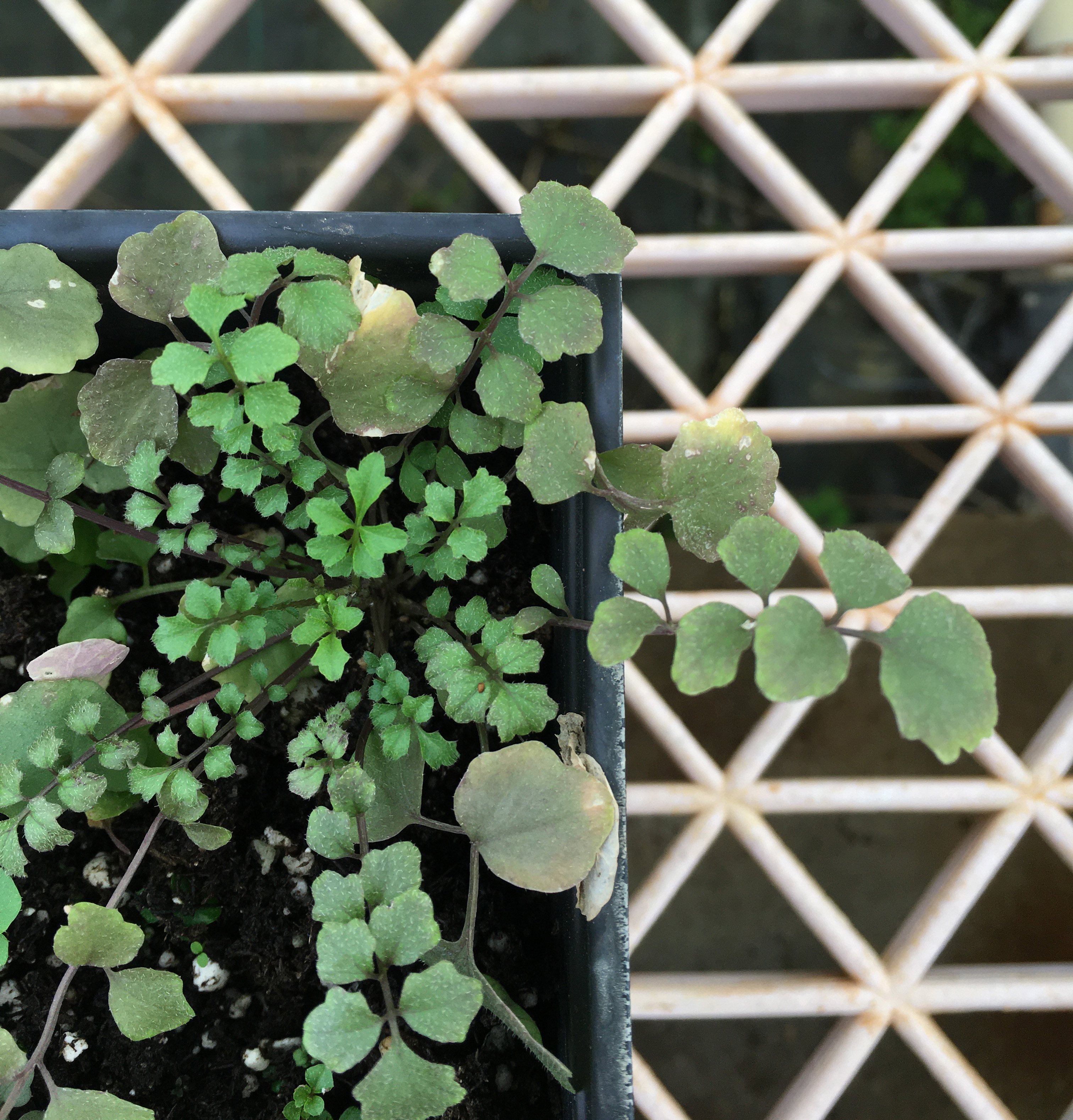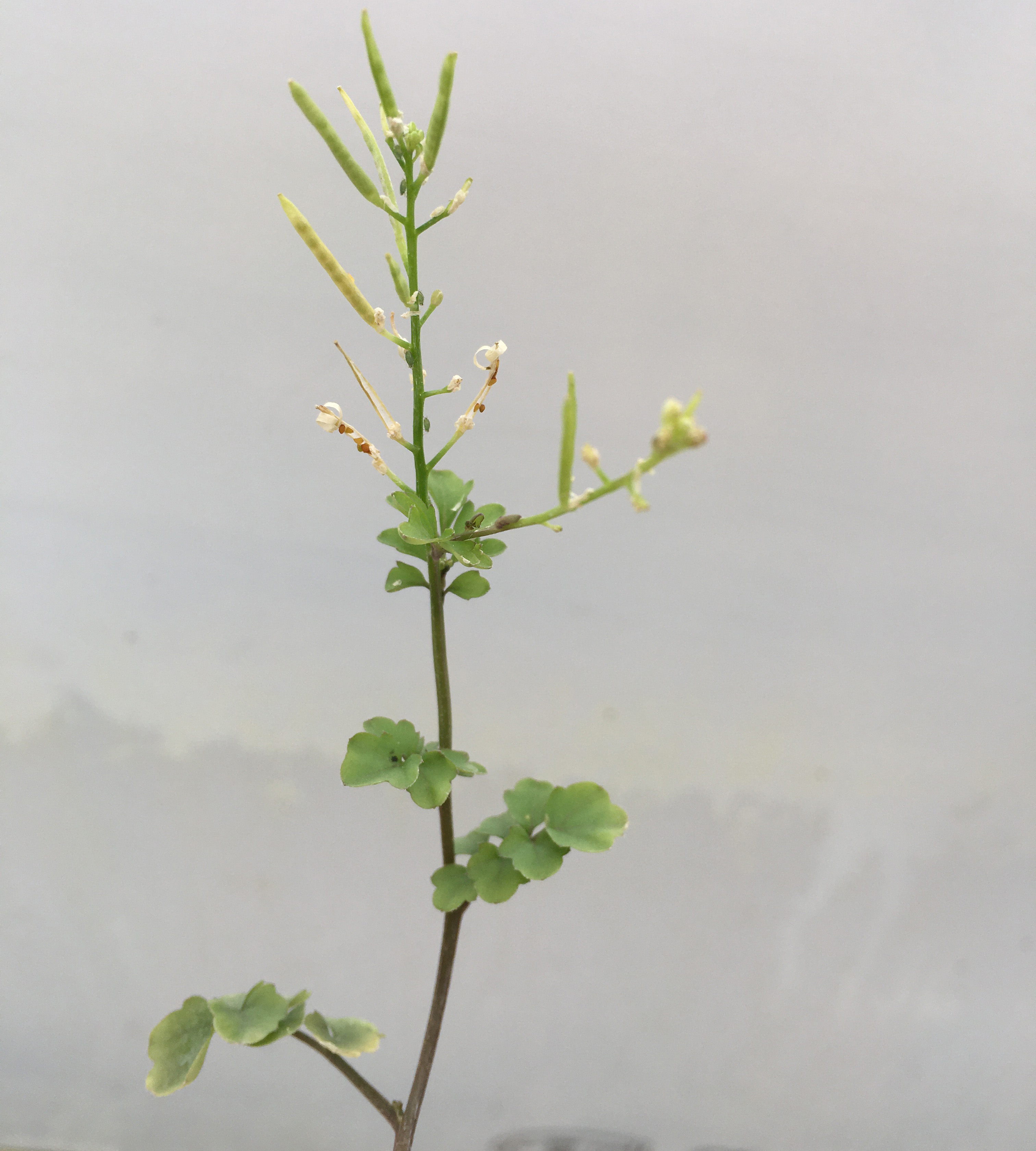How to identify and manage hairy bittercress in nurseries and greenhouses – Part 1
Identifying hairy bittercress (Cardamine hirsuta L.) early in container production can help growers develop an effective weed control plan.

Hairy bittercress (Cardamine hirsuta L.), also known as spring cress, lamb’s cress, winter bittercress, hairy cress, flick weed, wood cress and popping cress, is an important weed species of container nurseries and greenhouse operations. It is an annual or biennial, dicotyledonous plant, which belongs to the Mustard family (Brassicaceae). It is native to Europe and Asia but has established itself worldwide, including many parts of the United States, according to the USDA Plant Database.
Outdoors, hairy bittercress typically germinates in the fall, however it may appear throughout the year in greenhouses due to favorable growing conditions. In addition to competing with desirable plants, hairy bittercress is also known to be a host of many nursery insects such as mites and whiteflies and various pathogens of nursery plants. In this first part of this Michigan State University Extension article series, we will discuss how to identify hairy bittercress.
Biology of hairy bittercress
Habitat
Hairy bittercress occurs in a wide range of habitats such as, bare land, grasslands, woodlands, forests, croplands, wastelands, roadsides and in garden areas. It can even be found growing in pieces of debris scattered over weed fabric in greenhouses, which helps spreading seeds to several feet, and infesting nearby containers. It proliferates well in partial to full sunlight under moderate temperatures. It can be found in moist fertile loamy or sandy soil as well as growing media. Hairy bittercress can also grow inside greenhouse conditions (Photo 1) in nursery pots, according to Marble et al., 2014.
Growth habit
Hairy bittercress appears as a dense basal rosette initially. Afterwards, flowers and seeds are borne on a vertical growing stem, creating a more noticeable upright growth habit. Sometimes, it may have prostate growth, which makes control efforts via mowing ineffective.
Seedling
The cotyledons of seedlings are small, round, yellowish-green, hairy and are borne on petioles. The first true leaves are simple, kidney shaped or lobed. Subsequent leaves are compound, which are arranged alternately on stem.
Roots
Hairy bittercress has a shallow and fibrous root system. This makes it easy to control by hand weeding and cultivation.
Shoot
The plant stem is glabrous and erect, 3 to 8 inches long, reddish, or purplish at the base and becoming greener towards the top of plant. During the initial growth, it develops a basal rosette (Photo 2), which is comprised of compound leaves with two to four pairs of leaflets that are stalked and a terminal leaflet. The leaflet stalks are hairy. The leaflets are round to oval and there is a terminal leaflet, which is larger than others and is usually kidney shaped. Leaves are also present on the upright stem which are alternately arranged, rounded, 1.5- 5.5 cm long, sparsely hairy, have slightly serrated margins, have fewer leaflets, are generally smaller than the rosette leaves.

Flowers
Flowering occurs from anytime between March and June depending upon location. The flowering stalk originates from the center of rosette and flowers are present in small groups at the apex of stem, in clusters known as racemes. The flowers are small, white in color, with four petals (1.5-4.5 mm long) and four to six stamens.
Fruit and seeds
Hairy bittercress is a self-pollinating plant, and the seed pods grow on upper stem, above the leaves and below flowers. The flowers develops into pods and mature quickly. The seed pods split open and explosively disperse seeds when dry. Seed pods are cylindrical and point upwards, measuring 1.5 to 2.5 mm in length and 0.3-0.7 mm in width and contain tiny brown seeds (1 mm). Each plant produces up to 5,000 seeds. The forcible dispersal results in seeds being spread up to several feet away from the plant. The seeds of hairy bittercress have no dormancy requirements and can germinate quickly under favorable conditions. The seeds may remain viable in soil for several years in case of unfavorable growing conditions, according to Marble et al., 2014.

Propagation
Hairy bittercress propagates by seed.
Similar species
There are several species similar to hairy bittercress found in ornamental crop production, for example, hoary cress (Lepidium draba). The main distinctive feature of hoary cress is that it has heart shaped seed pods and is a perennial plant. Each single plant can spread to an area up to 12 feet in diameter, and the dispersal is by rhizomes as well. Pennsylvania bittercress (Cardamine pensylvanica) is another similar species to hairy bittercress but has lesser number of basal leaves and its flower always has six stamens, while that of hairy bittercress may have four, five or six stamens. Small-flowered bittercress (Cardamine parviflora) also known as sand cress, it has comparatively smaller leaves and it prefers drier areas for growing, according to Marble et al., 2014.



 Print
Print Email
Email




